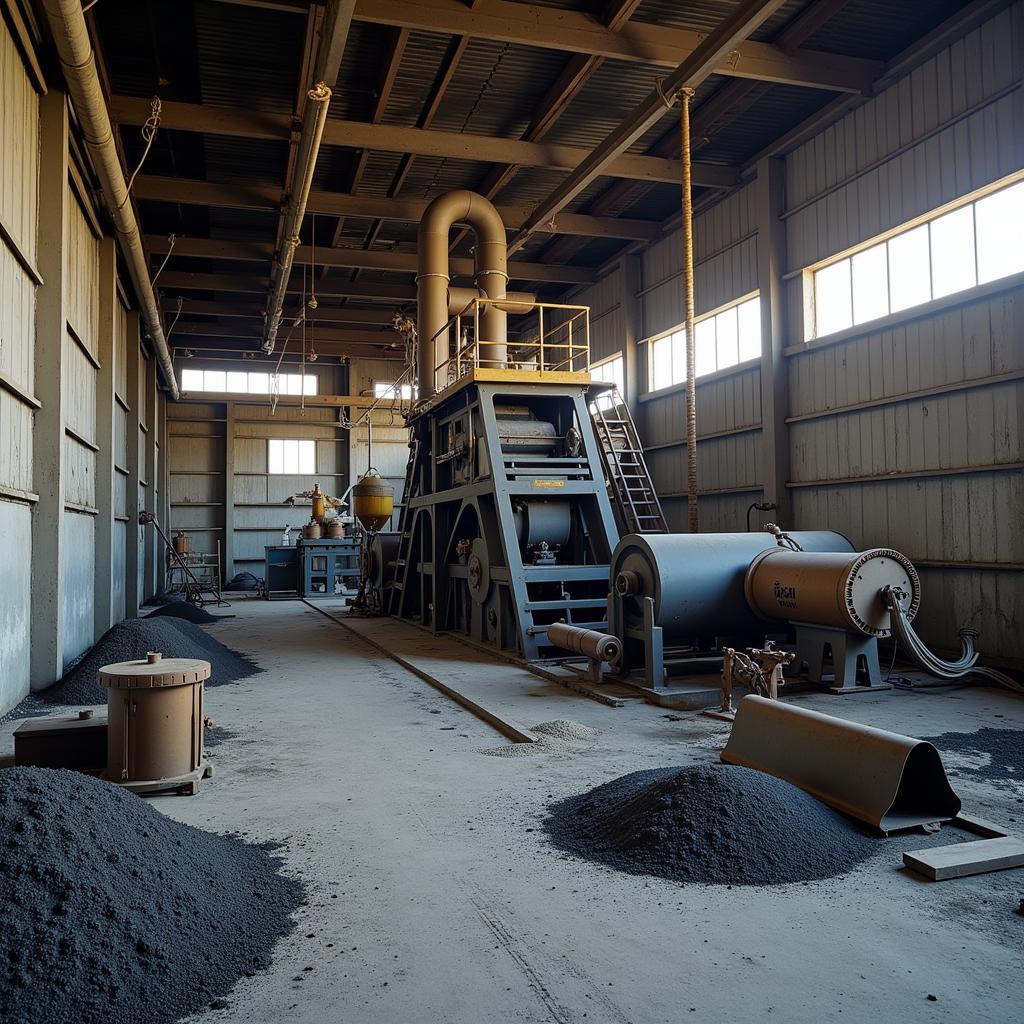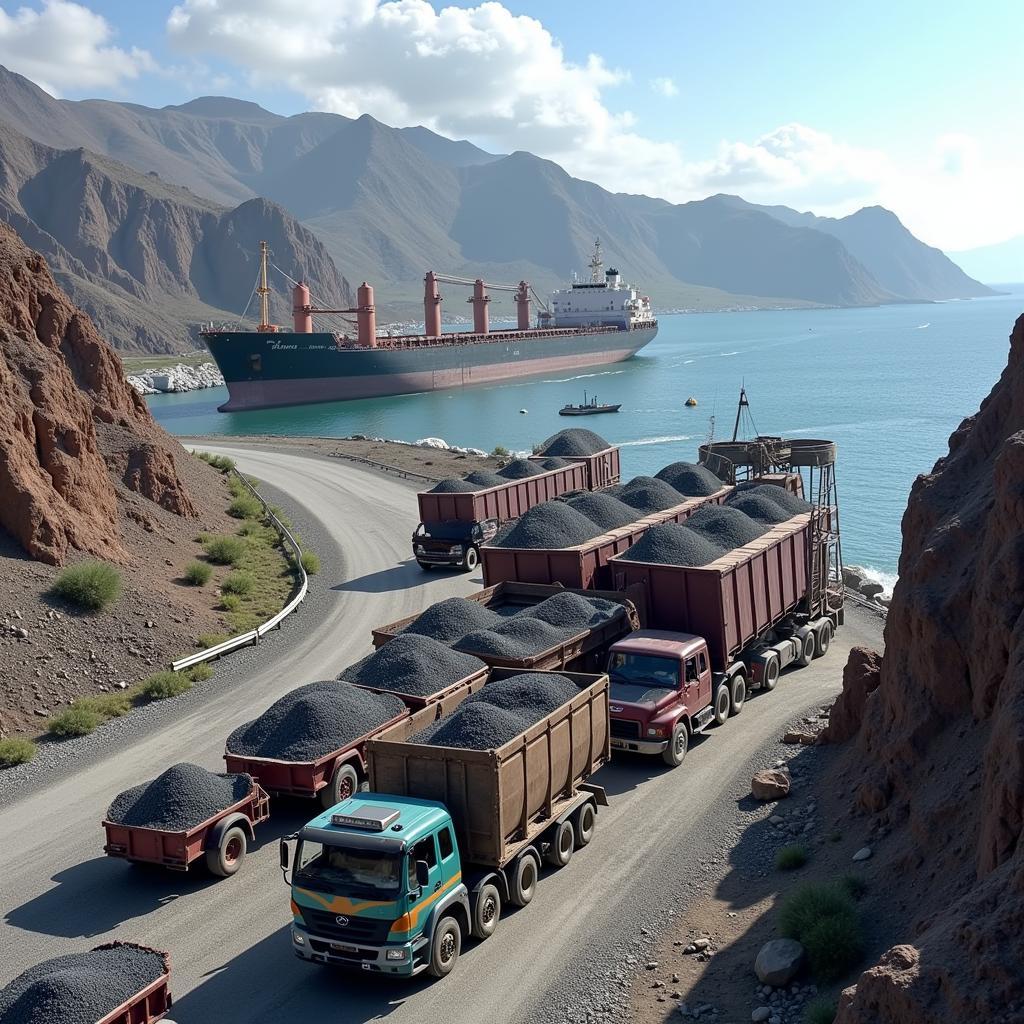Chromite, a mineral primarily used in the production of stainless steel, is a key component of Pakistan’s industrial sector. Understanding the factors influencing Chromite Price Per Ton In Pakistan is crucial for businesses involved in its mining, processing, and trading.
Factors Influencing Chromite Prices
The price of chromite in Pakistan is not static and is impacted by a confluence of global and domestic factors:
- Global Supply and Demand: As with any commodity, the fundamental principle of supply and demand plays a significant role. An increase in global demand for stainless steel, particularly from emerging economies, can drive up chromite prices. Conversely, a surplus in supply can lead to price reductions.
- Chinese Market Influence: China is the world’s largest consumer of chromite, accounting for a substantial portion of global imports. Fluctuations in Chinese demand, often driven by government policies and infrastructure projects, have a ripple effect on chromite prices worldwide, including Pakistan.
- Currency Fluctuations: Since chromite is traded internationally in US dollars, fluctuations in the Pakistani Rupee’s exchange rate directly impact the price of imported and exported chromite.
- Transportation Costs: Pakistan’s chromite mines are primarily located in the Balochistan province, often requiring significant transportation to reach processing plants or ports for export. Changes in fuel prices and logistical challenges can impact the final price per ton.
- Government Regulations and Taxes: Export duties, mining royalties, and environmental regulations imposed by the Pakistani government can all influence the final cost of chromite.
 Chromite processing plant in Pakistan
Chromite processing plant in Pakistan
Understanding the Grades of Chromite
Chromite ore is not homogenous and its value is determined by the concentration of chromium oxide (Cr2O3) present. Higher grades command higher prices due to their greater efficiency in stainless steel production. The most commonly traded grades include:
- High-Grade Chromite: Typically contains over 46% Cr2O3 and is primarily used in metallurgical applications.
- Medium-Grade Chromite: Contains between 30% to 45% Cr2O3 and is utilized in both metallurgical and chemical industries.
- Low-Grade Chromite: Has less than 30% Cr2O3 and is often used in refractory applications.
Current Chromite Price Trends in Pakistan
While providing a specific real-time price for chromite per ton in Pakistan is beyond the scope of this article (as prices fluctuate), several resources can provide up-to-date information:
- Pakistan Mineral Development Corporation (PMDC): This government-owned entity is a significant player in Pakistan’s mining sector and can provide market insights.
- Commodity Trading Platforms: Online platforms specializing in commodity trading often provide live price feeds and historical data for chromite.
- Industry Publications: Trade journals and publications focusing on the mining and metals industry often publish price assessments and market analyses.
 Chromite export from Pakistan
Chromite export from Pakistan
Investing in Pakistan’s Chromite Sector
Pakistan possesses significant chromite reserves, offering potential investment opportunities in mining, processing, and trading. However, thorough due diligence is crucial, considering factors such as:
- Geological Surveys: Understanding the quality and quantity of chromite reserves in a particular location is essential.
- Infrastructure Availability: Access to reliable transportation networks, power supply, and water resources are crucial for the viability of mining and processing operations.
- Government Policies: Familiarizing oneself with Pakistan’s mining regulations, taxation policies, and environmental requirements is crucial for sustainable investment.
Conclusion
The chromite price per ton in Pakistan is a dynamic figure influenced by a complex interplay of global market forces, domestic production, and government policies. Keeping abreast of these factors, understanding the different chromite grades, and conducting thorough research are essential for anyone involved in this significant sector of Pakistan’s economy.